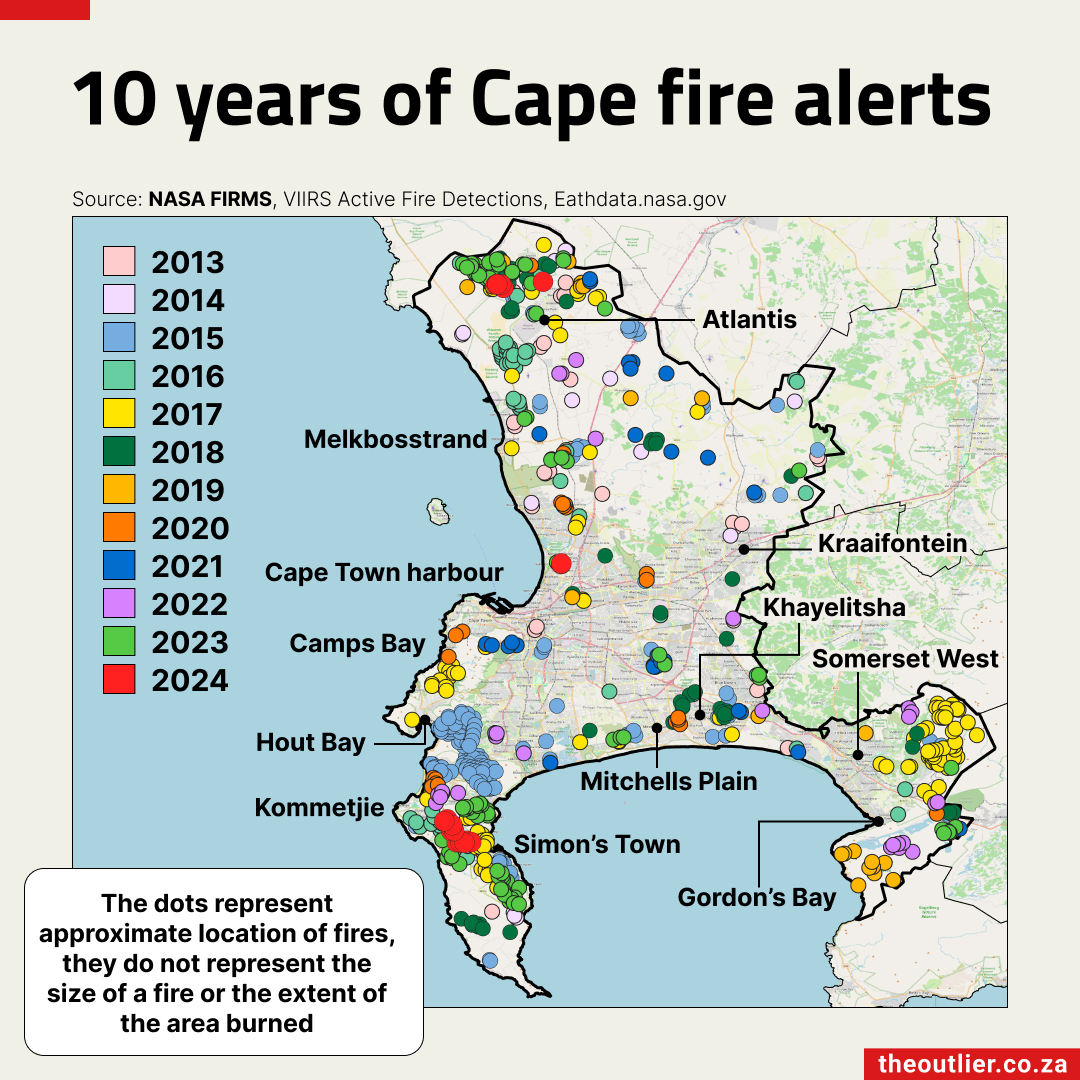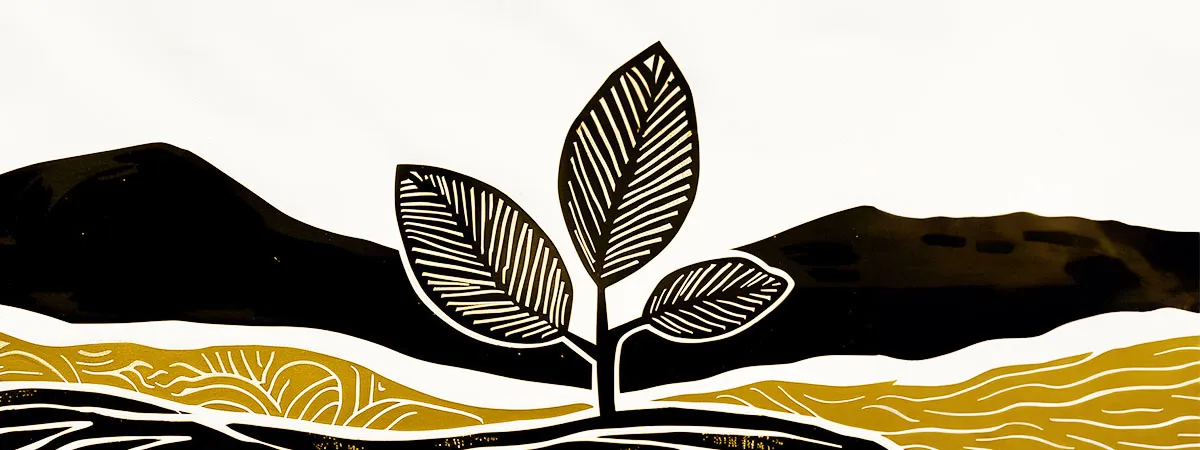THE OUTLIER FIRE CHARTS
Aerial surveillance shows a marked uptick in Cape Town fires

Satellites have picked up more than double the number of fire alerts over Cape Town in the past three months than for any of the previous six years. Two-thirds of the alerts were in December last year, which makes it the month with the third-highest number of fire warnings in the past 12 fire seasons, after March 2015 and January 2017.
Typically, the fire season in Cape Town runs from November and peaks in February or March the following year. But this season’s fires have been noticeably earlier than in previous years.
By the end of January, the 2023/24 fire season already had the fourth-highest number of alerts since the 2012/13 season.

Important caveat
It is important to note that fire alerts do not necessarily indicate the exact number of fires.
As Dr Heath Beckett of Stellenbosch University explains: “The Nasa VIIRS sensor [which is the source of the fire alerts data we have used] is mounted on a satellite which, in South Africa, passes overhead approximately twice a day… So if a fire burns throughout the day, it will be counted twice, and if it burns for two days, the same fire could be counted up to four times.
“On the other hand, a small fire could start and be extinguished between the time the satellite passes over and not be counted at all.”
The satellite data shows points on a map where a fire or hotspot has been detected; the dots on the maps we have created do not represent how big or small a fire is, or the extent of the burnt area. The dots are all the same size and their purpose is merely to show the approximate locations of the fires on a map.
You can find the Nasa fire information system here.
Burn comparisons
While fire alerts offer a snapshot of fire activity, a more accurate picture of fires is obtained by combining fire alerts with the burn patterns left in the aftermath of fires.
Satellite burn data for recent fires is not immediately available, but if we compare the patterns of previous years we can see how the burns map to the fire alerts.
In the 2017 Cape Town alerts and subsequent burn images below, we can see how the burn patterns mirror much of the activity. So while the fire alerts may overreport the actual number of fires, the correlation between the two in terms of location is clear.

Using fire alerts as an indicator of activity, it’s also possible to pick up patterns in the alerts of different years.
In the combined, animated images below, the alerts for January 2024 are in red. The bulk of the 2023 alerts on the Cape Peninsula are further south, closer to Simon’s Town. 2015 had the largest number of fire alerts, represented by the blue dots which are closer to Hout Bay.

While fires pose a high risk to human settlements, they also play a central role for the fynbos indigenous to the Western Cape.
The fynbos in these areas are adapted to and even dependent on periodic fires for regeneration and health. But it does play out both ways, and too-frequent fires can be more destructive than beneficial.
Many fynbos plants have seeds that require exposure to heat from fires to germinate. Fires trigger the opening of seed pods, allowing seeds to disperse and grow.
Fires also help clear dead vegetation and ensure biodiversity by ensuring that one species doesn’t become dominant.
However, while fire is essential, the timing, frequency and intensity of fires are critical. If fires occur too frequently, they can destroy seeds before they mature, leading to a loss of plant diversity.

Fynbos typically requires a fire every 12 years or so in the same spot, according to Prof Brian van Wilgen, an expert in fire ecology.
While fynbos is fire-adaptive and fire-dependent, too-frequent fires can become damaging. If fires occur every five years, for instance, it would be considered too frequent, he says. DM
First published by The Outlier. For more like this subscribe to the newsletter.



















Comments - Please login in order to comment.